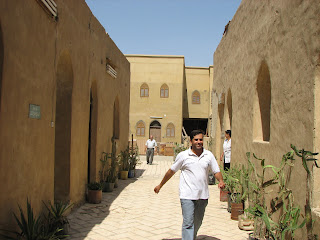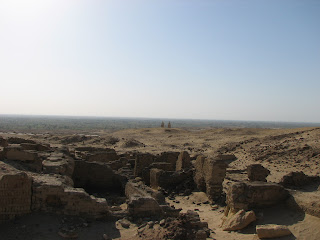He took us first to a very old monastery next to the Lahun pyramid just a few miles from where we live. It's thought to date back to the 3rd century. It's neat to think there was a Christian community in the Fayoum area from such an early date. I may have mentioned this before, but there is a bishop from the Fayoum area mentioned as attending the Council of Nicaeain 325 AD.

Here's Tony.

The second monastery was the one where Tony and family go quite a bit. These monasteries seem to act as community centers for the Copts. Tony says that his family will come and just hang out until 1 or 2 in the morning some nights!!


And then Tony's wife, Phoebe, brought lunch for all of us. It was delicious!!

The third monastery is dedicated to the angel Gabriel and it was probably founded in the second half of the 5th century. The church inside is dated to the 10th or 11th century. These paintings were covered over with plaster and apparently their very existence had been forgotten until a team was doing restoration work in 1991 and uncovered them.


When we turned the corner, Tony and his wife gasped and he said "You are lucky! The martyrs are usually not displayed and they are out today". Sure enough, there were two rows of glass coffins each containing a mummified body wrapped in velvet. Also uncovered by that same restoration team in 1991, nobody knows the details of these naturally mummified bodies other than some appear to be monks and they are certain these people were martyred because of the signs of torture, strangulation marks, limbs or heads missing, and blood-stained cloth.
In the back of the monastery are ruins which Tony thought to be the remains of the 5th c. settlement here. The hills in the background purportedly contain caves which were used by various monks....but no time to explore. I took a photo of all the shards of pottery we were walking on.


A photo of the monastery gates looking out over the Fayoum delta:

No comments:
Post a Comment